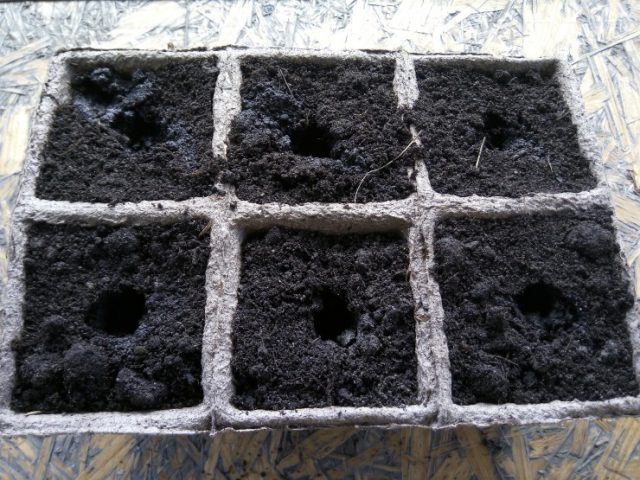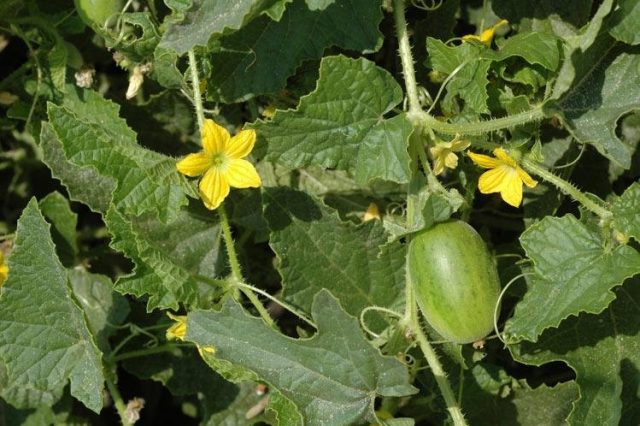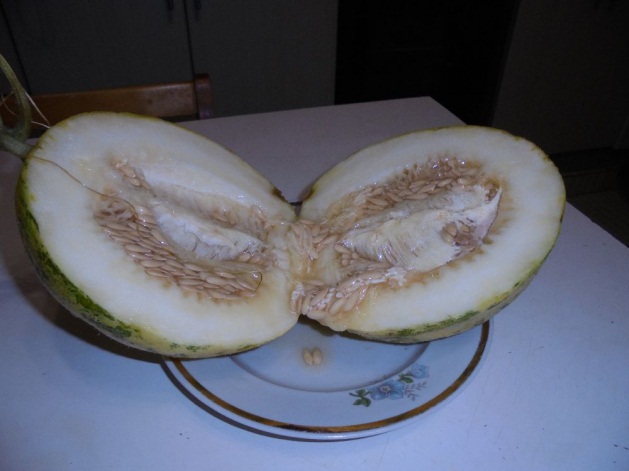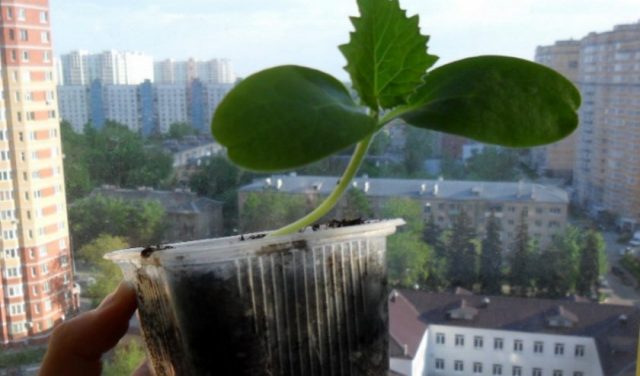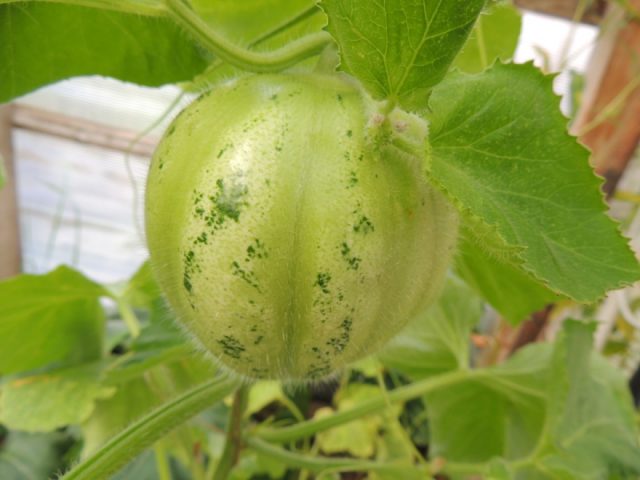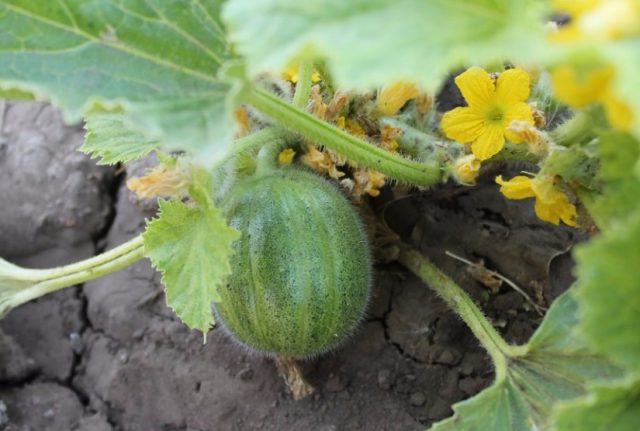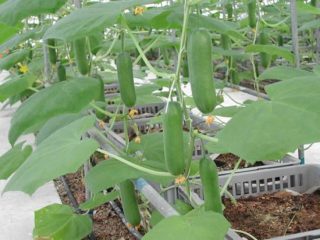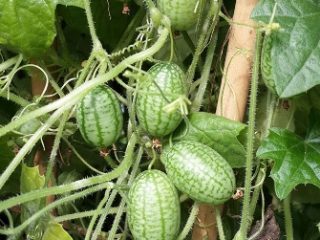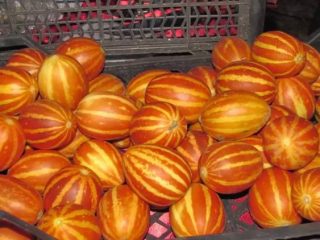Rare hybrids that combine the external characteristics of a cucumber and the taste of a melon are the Manduria cucumber and the Nectarine variety. These are the fruits of the selective work of Pavel Saraev. The scientist worked on creating a variety of frost-resistant cucumbers, and in the end he received a miracle vegetable - cucumber. At the stage of technical maturity, hybrids taste like cucumbers; at the biological stage, they taste like melons. The Nectarine variety is sweeter.
Pickle Manduria
This vegetable is versatile in use. At different stages of ripeness, it can be consumed like a cucumber or melon. According to external features, the hybrid has retained the spherical shape of a melon, and the stems and leaves of the plant remain from cucumber crops.
Description of Manduria cucumber
This is a climbing plant, its height does not exceed 2 m. The leaves are large, corner-shaped, cucumber-type. The Manduria cucumber bush is lush and massive, the shoots are strong, fleshy, capable of supporting the weight of large cucumbers and melons.
Fruits at the stage of technical maturity are light green, with vertical dark stripes, up to 12 cm long, weighing 100-200 g.At the stage of biological maturity, they become gray-green with small yellowish spots at the base. The skin is thin, covered with soft fluff. The shape is oval or round, weight ranges from 800 g to 1.2 kg. During this period, Cucumber Manduria acquires all the characteristics of a melon: taste, shape, aroma.
Manduria cucumber is distinguished from simple melon crops by its short growing season. The first fruits appear 70 days after planting, and after 90-100 days you can enjoy them. The ripening period is in June.
Planting cucumber Manduria
The crop is grown from seeds. They are planted as seedlings in early April. In this way, the first ripened cucumbers can be obtained already in early June. Manduria cucumber seeds are planted in special peat cups filled with a mixture of soil and humus.
As soon as the air temperature outside rises above + 20 ᵒC, the plants are transferred to open ground. The planting holes should be deep, so the seedling will develop a strong, branched root system and will be resistant to temperature changes and lack of precipitation.
You can sow Manduria cucumber at the end of May directly into open ground. Before planting, the seeds are soaked in a slightly pink solution of potassium permanganate for half an hour. Then the seed is embedded in the soil to a depth of 1.5 cm. A distance of 0.5 m is maintained between seeds, and 1 m between rows. Manduria cucumber is a spreading, tall plant that needs space.
Growing and caring for Manduria cucumber
The culture grows well and bears fruit, like all melons, in open sunny areas. Cucumber Manduria needs regular and abundant watering.It is also worth considering that the crop is not grown using trellises, only horizontally. During the ripening period, the total weight of the crop on one bush reaches 20 kg, the plant may break.
As soon as the plant is 25 cm long, it is pinched to form side shoots. To do this, remove the central shoot after the 5th leaf. The lateral shoots should be pinched after the 8th leaf appears. No more than 4 ovaries should be left on each shoot to ensure larger melons.
Before the fruits ripen, Manduria cucumber is watered every other day, moderately. Once the melons begin to grow, reduce watering to keep them sweeter.
After planting and until the ovaries appear, the Manduria cucumber is fed with manure and saltpeter 2 times a month. For 1 bucket of water take 1 liter of cow dung and 1 tbsp. l. saltpeter. All components are dissolved to a liquid state.
Reviews of cucumber Manduria
Cucumber Nectarine
This plant is rare and exotic for Russia. Cucumber Nectarine is another hybrid obtained by crossing a cucumber and a melon.
Description of Nectarine cucumber
The plant is branched, spreading, powerful. In terms of height, structure, and leaf shape, this is a typical cucumber.
The first fruits are oval, thin, dark green in color, their size does not exceed 10 cm. The skin of the greens is thin, soft, covered with thick fluff. The seeds are almost imperceptible to the taste. As the fruit ripens, the skin darkens and becomes smoother. Closer to August, the green Nectarine cucumbers look like full-fledged melons: they turn yellow, become round, and large seeds ripen in them. From one bush you can collect up to 12 fruits, each weighing no more than 2 kg.
Planting cucumber Nectarine
In the central and northern regions of Russia, Nectarine cucumber is grown through seedlings. Seeds are sown in small pots at the end of April. The container is filled with a mixture of garden soil and humus in equal parts. Seeds pre-soaked in a weak solution of manganese are planted in the soil to a depth of 1.5 cm.Filled pots and cups are placed in a warm, bright place for germinating seedlings, watered as the soil dries. The temperature before emergence should not fall below + 25 ᵒС. As soon as the first sprouts of the Nectarine cucumber hatch, the temperature is reduced to + 20 ᵒC.
After 5 true leaves appear, the seedlings are transferred to the greenhouse. Planting is carried out similarly to rooting in open ground.
In the southern regions, Nectarine cucumber is planted directly into the soil. Before planting, dig up the soil and add humus. Seeds are planted at a distance of 0.5 m and 1 m between rows.
Growing and caring for cucumber Nectarine
For planting, choose a well-lit area; in the shade and partial shade, Ogurdynya Nectarine does not bear fruit. The culture grows well on compost heaps; before planting, the soil can be generously fertilized with humus. The soil must be thoroughly dug up and moistened. After planting, each plant is watered abundantly, and the soil is mulched with hay. This will help keep the soil moisture at the same level, while the Nectarine cucumbers will grow evenly without cracks.
For abundant fruiting, the Nectarine cucumber is pinched after the appearance of the 5th true leaf. This procedure stimulates the growth of side shoots. They, in turn, are also pinched after the appearance of the 4th leaf. No more than 3 or 4 ovaries are left on the shoots.
For watering, it is good to use a watering can with a spray or drip irrigation. Ogurdynya Nectarine does not need abundant watering, but it should be regular (at least 3 times a week). After the first ovaries appear, the frequency of watering is reduced to make the fruits more sugary.
It is better to grow the crop spread out.Ripe Nectarine cucumbers are quite large; when suspended, they will break off the stems. If you want to grow cucumber on a trellis, the fruits are tied with nets. This way they will not fall and break.
Cow or chicken droppings are used as fertilizer. It is diluted with water 1:10 and watered at the root of the bush. 2 waterings per month are enough. As soon as the greens begin to ripen, stop feeding.
Reviews of cucumber Nectarine
Conclusion
Cucumber Manduria, Nectarine are hybrids obtained by a Russian breeder. The crops are intended for cultivation in the central and northern regions, where it is almost impossible to obtain a melon crop. The main advantage of the hybrid is its ability to bear fruit abundantly even in unfavorable conditions.

